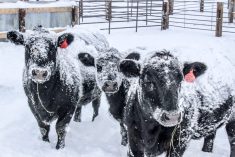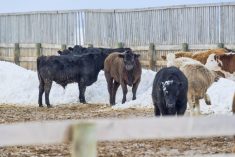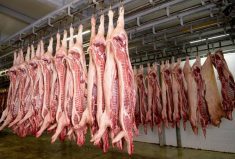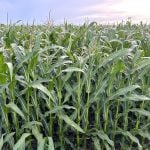Chicago | Reuters — Ranchers in September drove 13.5 per cent more cattle into U.S. feedlots than the same month a year earlier, the U.S. Department of Agriculture reported on Friday.
The result topped analysts’ average forecasts and hit its highest level for the month in six years.
“The good news for the consumer is we’ve got record supplies of beef and pork going into the fourth quarter. And when we get into the spring grilling season, we’re going to have big supplies still,” said U.S. Commodities president Don Roose.
Read Also

U.S. livestock: Chicago cattle, hogs drop
Chicago cattle and hog futures fell on Wednesday. Most-active February live cattle futures lost 2.100 cents to settle at 234.525…
Some cattle ranchers and feedlots, or cattle feeders, rushed livestock to market last month while capitalizing on affordable feed, said analysts. And prices for animals at that time appeared to reach a seasonal fall low.
Furthermore cattle from the drought-stricken northern Plains landed in feedlots in Corn Belt states where many of them were fattened and sold to packing plants.
On Monday, Chicago Mercantile Exchange live cattle futures could open 0.5 to one U.S. cent per pound lower based on Friday’s bearish placement outcome, the analysts said.
USDA’s report showed September placements at 2.15 million head, up 13.5 per cent from 1.895 million a year earlier and above the average forecast of 2.046 million.
It was the largest September placement figure since 2.415 million in 2011, according to Allendale Inc. chief strategist Rich Nelson.
The government put the feedlot cattle supply as of Oct. 1 at 10.813 million head, up 5.4 per cent from 10.256 million a year ago. Analysts, on average, forecast a 4.6 percent increase.
USDA said the number of cattle sold to packers, or marketings, were up 2.9 per cent in September from a year ago to 1.783 million head.
Analysts had projected a gain of 2.6 percent from 1.732 million last year.
Nelson said cattle feeders were enthusiastic after seeing cattle prices last month carve out a low for the season.
“Those cattle should come to market in March through early August, which will curb some of that enthusiasm about the 2018 cattle price picture,” he said.
Roose said low-priced feed, which reduced input costs for cattle feeders, and improved cattle prices were the main driver behind September’s large placements.
“Feeder cattle prices caught fire and along with cheap corn, guys were moving the cattle,” said Roose.
— Theopolis Waters reports on livestock markets for Reuters from Chicago.
















